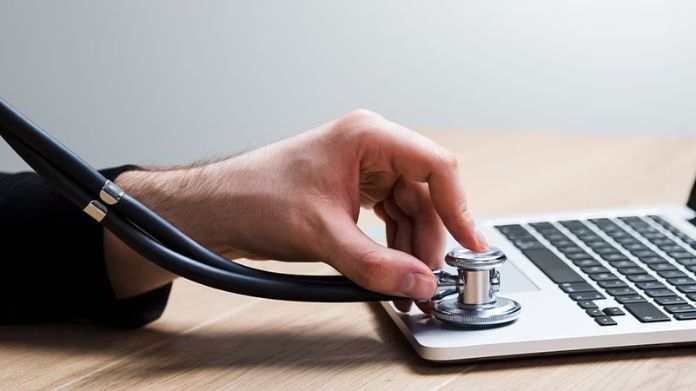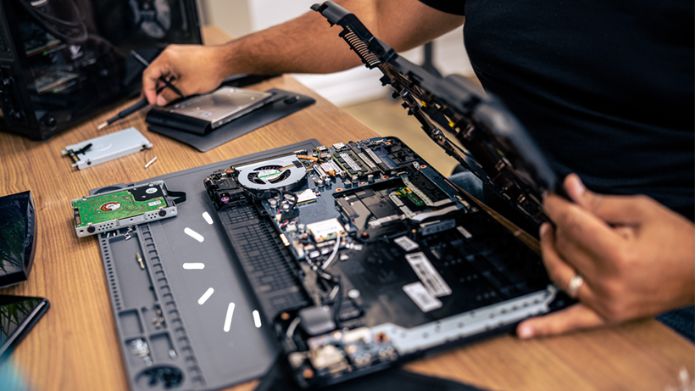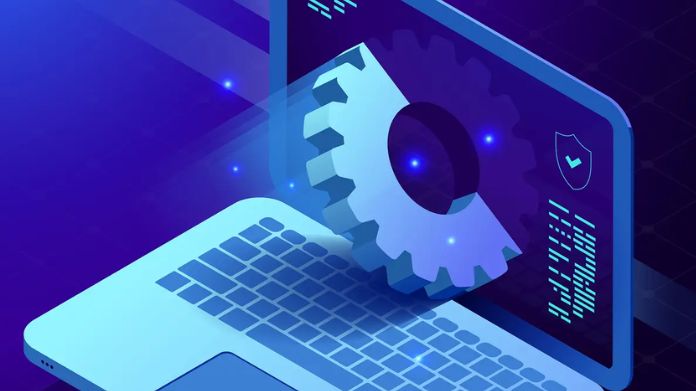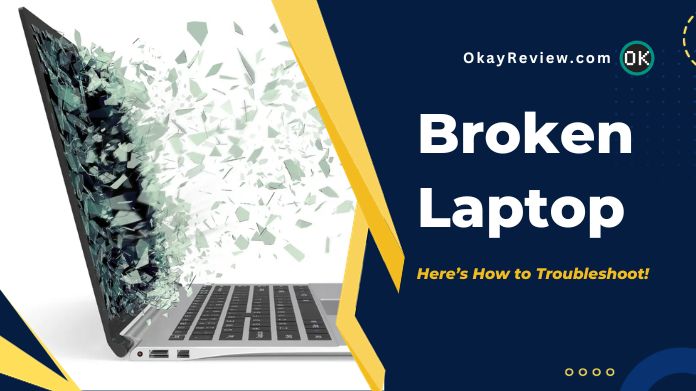Encountering issues with your broken laptop can be a major inconvenience, whether for work, study, or leisure.
But before you consider replacing it, know that many problems can be fixed with the right approach.
In this guide on troubleshooting broken laptops, we’ll walk you through practical steps to diagnose and fix common issues.
From simple software glitches to more complex hardware repairs, we’ll help you breathe new life into your damaged laptop, saving you time and money.
Table of Contents
Identifying the Problem With Broken Laptop
When faced with a broken laptop, the initial step is to pinpoint the root cause of the issue. This process is crucial as it guides you towards the appropriate solution.
Here’s a step-by-step guide to help you identify the problem with your damaged laptop:
- Initial Observation: Start by examining your laptop for any visible signs of damage. This includes checking the screen, keyboard, and other external components for cracks, breaks, or loose connections. Physical damage is often a clear indicator of the problem with a broken laptop.
- Power Check: Ensure that your laptop is properly charged or plugged in. A laptop that won’t turn on might have a drained battery or a faulty power adapter. This is a common scenario in the realm of damaged laptops.
- Listen for Sounds: When you attempt to turn on your laptop, listen for any sounds like beeping or clicking. These sounds can be diagnostic codes indicating specific issues. For instance, a continuous beeping sound on a broken laptop often points to a RAM issue.
- Check the Display: Connect your laptop to an external monitor if it powers on, but the screen remains blank. If the external display works, the issue might be with your laptop’s screen, a common problem in damaged laptops.
- Boot in Safe Mode: Try booting your laptop in safe mode. This can help you determine if the issue is software-related. A broken laptop that boots in safe mode suggests software conflicts or corrupted files rather than hardware issues.
- Run Diagnostics: Many laptops come with built-in diagnostics tools. Run these to check the health of your hardware components. This step is beneficial if you suspect a hardware failure in your damaged laptop.
- Observe Performance Issues: If your laptop boots up but is slow or unresponsive, it could be due to software issues or a failing hard drive. Performance issues are common in broken laptops and can often be resolved with software fixes.
- Listen to the Hard Drive: It could be a sign of physical damage if you hear unusual noises from your hard drive. This is a critical issue in damaged laptops, as it could lead to data loss.
Assessing Repair vs. Replacement
 When dealing with a broken laptop, one of the critical decisions you need to make is whether to repair or replace it entirely.
When dealing with a broken laptop, one of the critical decisions you need to make is whether to repair or replace it entirely.
This decision can be challenging, but by carefully weighing your options, you can choose to suit your needs and budget best.
Here’s a guide to help you assess whether to repair or replace your broken laptop:
- Consider the Age of Your Laptop: The age of your damaged laptop plays a significant role in your decision. If your laptop is relatively new and still meets your needs, repairing it might be the most cost-effective solution. However, if it’s several years old, technology has likely advanced significantly since you bought it, and replacement might be a better option.
- Evaluate the Cost of Repairs: Get an estimate for the repairs needed for your broken laptop. If the cost of repairs is more than half the price of a new laptop, it might be more economical to invest in a new one. Remember, investing in repairing a broken laptop only makes sense if it significantly extends the laptop’s life.
- Assess the Extent of Damage: Minor issues like faulty batteries or broken keys can be easily fixed. However, significant damages like a malfunctioning motherboard or a severely cracked screen in a damaged laptop might not be worth the repair costs.
- Check Warranty and Insurance: If your broken laptop is still under warranty or covered by insurance, check what repairs are covered. Sometimes, the manufacturer might offer a replacement at a reduced cost or even free.
- Think About Performance Needs: Does your broken laptop still perform the tasks you need efficiently? If your current laptop struggles with your workload, upgrading to a new model might be more beneficial than repairing the old one.
- Consider the Impact on Productivity: If you rely heavily on your laptop for work or school, consider how long you can manage without it. Repairs might leave you without a laptop for days or even weeks. Getting a new laptop might be quicker and less disruptive.
- Future-Proofing: Technology evolves rapidly. A new laptop might offer advanced features and better compatibility with future software and updates. If staying up-to-date is important for your work or personal use, replacing your broken laptop could be wise.
- Resale Value: Consider the resale value of your damaged laptop. Even if it’s not suitable for your needs, it might still be valuable to someone else. Selling it could help fund the purchase of a new laptop.
Basic Troubleshooting Techniques
When you encounter issues with your broken laptop, starting with some basic troubleshooting techniques is essential. These initial steps often resolve common problems without extensive repairs.
Here’s a straightforward guide to basic troubleshooting for your broken laptop:
- Restart Your Laptop: This might seem too simple, but restarting your broken laptop can often solve various issues. A reboot can clear temporary glitches and is always a good first step.
- Check Your Power Source: If your damaged laptop won’t turn on, ensure it’s properly connected to a power source. Check the power cable for damage and confirm that the outlet works.
- Inspect External Devices: Remove all external devices like USB drives, external hard drives, and peripherals. Sometimes, these can cause conflicts or power issues with your broken laptop.
- Look for Error Messages: Pay attention to any error messages when you try to boot your damaged laptop. These messages can provide valuable clues about what’s going wrong.
- Enter Safe Mode: Booting your broken laptop in safe mode can help diagnose software issues. In safe mode, your laptop runs with minimal drivers and software, which can help isolate the problem.
- Update Drivers and Software: Outdated drivers or software can cause issues in your broken laptop. Check for and install updates to ensure that everything is up to date.
Repairing Common Hardware Issues
 Hardware issues can often be the culprit when facing a broken laptop. From a malfunctioning keyboard to a failing hard drive, these problems can seem daunting.
Hardware issues can often be the culprit when facing a broken laptop. From a malfunctioning keyboard to a failing hard drive, these problems can seem daunting.
However, you can tackle these issues head-on with some know-how and the right approach.
Here’s a guide to repairing common hardware issues in a damaged laptop:
- Replacing a Faulty Keyboard: Spills, dust, and regular wear and tear can lead to keyboard malfunctions in a broken laptop. If specific keys don’t respond or the keyboard is entirely unresponsive, consider replacing it.
- Fixing a Broken Laptop Screen: A cracked or flickering screen is common in broken laptops. Replacing the screen might be your only option if the damage is severe. This involves carefully removing the screen bezel, disconnecting the old screen, and installing a new one. To avoid damage, treat the screen gently.
- Addressing Overheating Problems: Overheating can cause your broken laptop to shut down unexpectedly. This is often due to a clogged fan or a malfunctioning heat sink. Cleaning the fan and vents can improve airflow; if the problem persists, consider replacing the thermal paste on the CPU.
- Replacing a Dead Battery: The battery might need replacing if your damaged laptop won’t hold a charge. Most laptop batteries can be easily removed and replaced. Ensure you get a battery compatible with your laptop model.
- Upgrading the Hard Drive: A failing hard drive can cause many issues in a broken laptop, from slow performance to data loss. Replacing or upgrading the hard drive can breathe new life into your laptop. You have the option of using a standard HDD or a speedier SSD. Remember to back up your data before starting this process.
- Dealing with Port Issues: If USB or other ports are not working, it could be due to physical damage or dust accumulation. Cleaning the ports might help, but if they’re physically damaged, you might need to replace the port or the motherboard, which can be more complex.
- Resolving RAM Problems: Insufficient or faulty RAM can cause your damaged laptop to crash or display the dreaded blue screen. Upgrading or replacing your RAM is relatively straightforward. Just ensure you purchase the correct type of RAM for your laptop model.
Software Fixes and Updates
 If you’re grappling with issues on your broken laptop, it’s not always the hardware at fault. Often, software problems can cause your laptop to behave erratically.
If you’re grappling with issues on your broken laptop, it’s not always the hardware at fault. Often, software problems can cause your laptop to behave erratically.
Fortunately, many of these problems may be fixed with simple software upgrades and patches.
Here’s how you can tackle software-related problems in your damaged laptop:
- Updating Your Operating System: An outdated operating system can lead to a host of issues in a broken laptop, including security vulnerabilities and compatibility problems. Regularly check for and install OS updates. These updates often include critical patches and performance improvements.
- Cleaning Up Disk Space: A cluttered hard drive can slow down your damaged laptop. Use built-in tools like Disk Cleanup on Windows or Storage Management on macOS to remove unnecessary files. To free up space, uninstall apps you no longer use and erase temporary files.
- Updating Drivers: Outdated or corrupt drivers can cause various issues, from hardware malfunctions to software crashes in a broken laptop. Check your device manager for any devices with a yellow exclamation mark and update these drivers. You can also visit your laptop manufacturer’s website for the latest drivers.
- Checking for Software Conflicts: Sometimes, newly installed programs or updates can conflict with existing software on your broken laptop. If you notice issues after installing a new application, try uninstalling it to see if that resolves the problem.
- Restoring to a Previous State: If your damaged laptop started experiencing issues after a recent change, consider using System Restore on Windows or Time Machine on macOS to roll back to a previous state when everything was working fine.
When to Seek Professional Help
It’s important to recognize when professional help is needed for your broken laptop. If basic troubleshooting doesn’t fix the issue, especially with complex hardware problems like motherboard faults or severe physical damage, it’s time to consult a technician.
Persistent software issues, such as continuous crashes or unresolved performance problems after updates, also call for expert intervention.
Additionally, professional assistance is advisable if you’re facing data recovery challenges or if your damaged laptop is still under warranty. DIY attempts in these cases might lead to further damage or voiding the warranty.
Wrap Up!
Troubleshooting and repairing a broken laptop can be a manageable task. By methodically identifying the issue, assessing repair versus replacement, and applying basic troubleshooting techniques, you can often resolve common problems.
Remember, seeking professional help is a wise choice when faced with complex issues in your broken laptop.


This is a very helpful guide! Troubleshooting a broken laptop can be frustrating, but your step-by-step approach makes it easier. Do you have any recommendations for common overheating issues and how to prevent them?